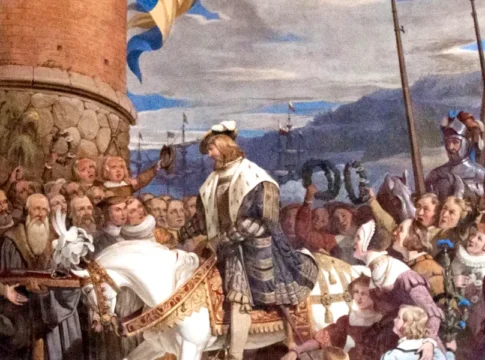Håkan Lans: Computer graphics and navigation systems
Håkan Lans, born in 1947 in Stockholm, is a prominent Swedish inventor and engineer renowned for his groundbreaking contributions to computer graphics and navigation systems.
His early fascination with technology was evident when, at the age of twelve, he constructed a motorized go-kart. By eighteen, he had built a mini-submarine capable of diving to 90 meters, which garnered media attention and showcased his innovative spirit.
Education and early career
Lans pursued engineering studies and graduated in 1968. Following his education, he spent a decade at the Swedish Defence Research Institute (FOA), where he engaged in various research projects, including developing underwater imaging technologies. It was during this time that he conceived the idea for a color graphics generator, which led to his invention of a color graphics system for computers, patented in 1979 as US Patent 4,303,986134.
The Computer Mouse: He developed the HIpad, an early form of the computer mouse, which allowed more intuitive computer interaction—pivotal for interface design.
STDMA Navigation System: His most notable contribution, the Self-Organizing Time Division Multiple Access (STDMA), integrates GPS with radio communications, now a global standard in maritime and aviation navigation.
Legal challenges
Despite his numerous innovations, Lans faced extensive legal battles over patent rights. He was involved in protracted litigation against major corporations like Dell and Hewlett-Packard for unauthorized use of his color graphics technology. Although he initially achieved settlements with companies like Hitachi and IBM, subsequent legal challenges resulted in significant financial burdens due to unfavorable court rulings.
Recognition and awards
Lans’s contributions have not gone unrecognized; he received the Polhem Prize in 1995 and was honored as an honorary doctor at Uppsala University. His work has had a lasting impact on both technology and industry standards globally.
Conclusion
Håkan Lans exemplifies the spirit of innovation that has characterized Stockholm and Sweden’s technological advancements. His pioneering work in computer graphics and navigation systems has not only transformed industries but also laid the groundwork for future developments in these fields. Despite facing legal hurdles, Lans’s legacy as a visionary inventor continues to inspire future generations of engineers and technologists.




 The Innovations of Håkan Lans
The Innovations of Håkan Lans Håkan Lans innovationer
Håkan Lans innovationer




